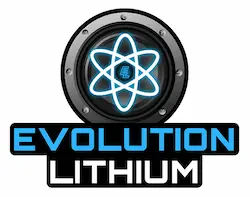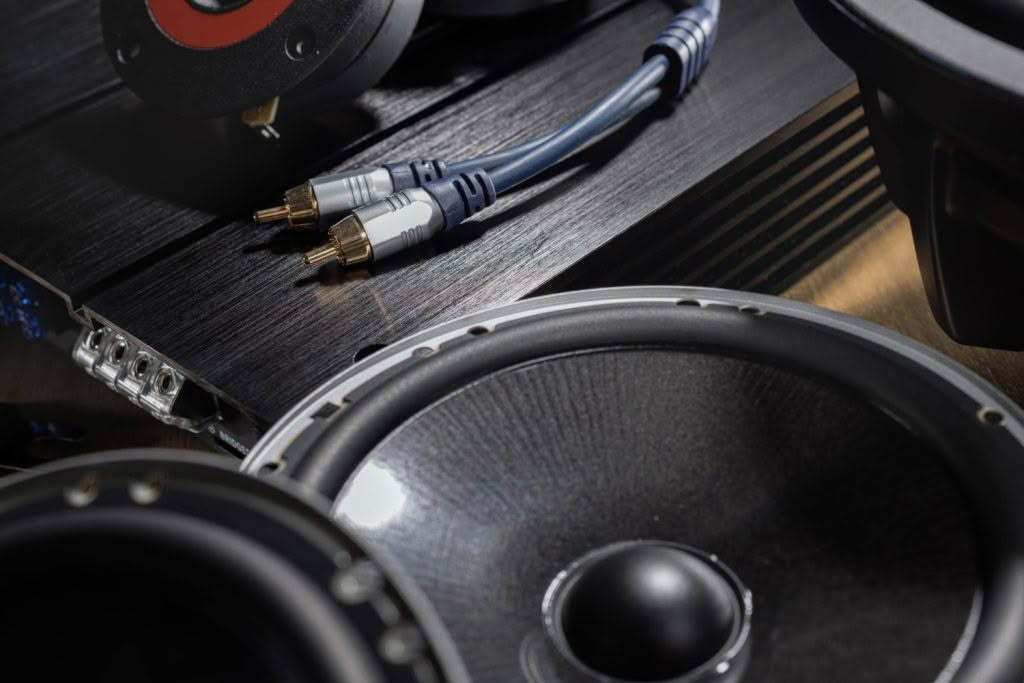What is the Difference Between the Different SCiB Cells: 2.9Ah, 6Ah, 10Ah, 20Ah
What is the Difference Between the Different SCiB Cells: 2.9Ah, 6Ah, 10Ah, 20Ah
Choosing the right battery can make all the difference in powering your next project or solution. Toshiba’s SCiB (Super Charge Ion Battery) technology stands out in the world of advanced lithium-ion batteries, offering a range of cell capacities like 2.9Ah, 6Ah, 10Ah, and 20Ah. But what’s the real difference between these SCiB cell sizes, and how can selecting the right one improve performance and longevity for your specific applications?
Whether you’re designing for small devices, electric mobility, industrial backup, or grid-scale energy storage, understanding how each SCiB cell capacity impacts performance, compatibility, and cost is crucial. In this article, we’ll break down the technical and practical distinctions between these popular SCiB cell options, answer common questions you won’t find elsewhere, and share expert insights to help you make the smartest investment for your energy storage needs.
Choosing the right SCiB (Super Charge Ion Battery) cell capacity can have a significant impact on your system’s efficiency, longevity, and scalability. To make sense of the differences between 2.9Ah, 6Ah, 10Ah, and 20Ah SCiB cells, it’s important to understand both the technical specifications and practical considerations that influence their real-world performance and procurement.
Technical Overview and Performance Metrics
- Ampere-hour (Ah) Explained: The “Ah” rating indicates the amount of electric charge a cell can deliver over one hour. Higher Ah means greater energy storage capacity.
Physical Form Factor & Voltage: SCiB cells are available in various shapes, including cylindrical and prismatic formats, often standardized at voltages like 2.3V. The 2.9Ah variant is typically compact and lightweight, whereas the 20Ah model is larger and designed for high-capacity applications.
Performance Variations: As Ah increases, so does total energy storage and potential output. However, larger capacities may have lower specific energy (Wh/kg) compared to smaller, more energy-dense cells. Cycle life—the number of complete charge/discharge cycles—remains excellent across the range, but can be optimized for specific applications.
Charge/Discharge Rates: SCiB cells are renowned for rapid charging, although smaller cells (2.9Ah, 6Ah) may support faster rates relative to capacity, while larger cells (10Ah, 20Ah) excel at bulk energy transfer.
Application Suitability and System Design
- 2.9Ah SCiB Cells: Ideal for portable electronics, wearables, and compact devices where space and weight are primary concerns.
6Ah SCiB Cells: Suited for micro-mobility solutions, handheld power tools, and embedded backup systems requiring a balance between size and output.
10Ah SCiB Cells: Often deployed in electric vehicles, industrial robots, or mid-sized backup power where dependable performance and longevity are critical.
20Ah SCiB Cells: Well-suited for grid storage, commercial UPS, and large-scale renewable integrations where maximum capacity and resilience are required.
From a system design perspective, SCiB’s modularity allows users to flexibly configure packs using these capacities for scalability. Additionally, procurement involves factors like global shipping, direct supplier communication, and considering options such as negotiable delivery times—topics highlighted on supplier websites. Always verify compatibility and seek support if battery monitoring relies on web portals or JavaScript-enabled tools.
By understanding how these SCiB cell capacities differ technically and practically, you can make informed decisions that align with your application’s requirements, ensuring optimal investment and system reliability.
Unique Benefits and Considerations for Each SCiB Cell Type
While comparing capacities is essential, understanding the unique advantages and practical considerations for each SCiB cell type (2.9Ah, 6Ah, 10Ah, 20Ah) will help users make a truly informed choice. Beyond basic specs, factors like safety features, environmental adaptability, and system integration can significantly impact performance and long-term value.
Advantages and Real-World Applications
2.9Ah and 6Ah SCiB Cells: These smaller cells shine when fast charging and lightweight design are priorities. Their compact form factor is ideal for applications like portable electronics, medical devices, and compact energy storage in e-mobility solutions. Their rapid charge-discharge capabilities minimize downtime and maximize readiness, which is crucial for mission-critical use cases.
10Ah SCiB Cells: Offering a middle ground, these cells balance moderate energy storage with robust power output. They are often used in larger e-mobility platforms, backup modules for IT and telecom systems, and industrial robotics where balanced size, energy, and endurance are key considerations.
20Ah SCiB Cells: Boasting the highest capacity, these are built for heavy-duty scenarios, such as grid storage, commercial electric vehicles, and large-scale UPS systems. The higher Ah enables longer run times and greater total energy throughput, maximizing efficiency in environments with intensive daily cycles.
Real-world scenarios show that choosing the right cell size can prevent issues like system bottlenecks or unnecessary maintenance. For example, deploying 20Ah cells in a quick-turnover robotics application may lead to over-investment and space inefficiencies, while undersized cells in industrial energy storage can impact uptime.
Installation, Maintenance, and Integration Insights
Selecting the optimal SCiB cell extends beyond the datasheet. Considerations like warranty terms, ease of installation, compatibility with existing systems, and lifecycle costs are critical. Since some battery monitoring and management systems rely on online portals—which may depend on JavaScript—users should verify browser compatibility to ensure full system access. Addressing such technical nuances up front prevents surprise obstacles during setup or routine maintenance.
Finally, when sourcing SCiB cells, proactive communication with suppliers can clarify lead times, shipping arrangements, and after-sales service—points often underemphasized but vital for a seamless procurement process. Engaging with experienced vendors enhances support throughout the battery’s operational life, ensuring your investment delivers reliable results in the field.
Frequently Asked Questions
Q: What is the most important thing to know when choosing between 2.9Ah, 6Ah, 10Ah, and 20Ah SCiB cells?
A: The most crucial factor to consider is matching the cell capacity (measured in ampere-hours, or “Ah”) to your specific use case. Each SCiB cell size provides unique advantages in terms of energy storage, power output, size, and cycle life. For example, 2.9Ah and 6Ah cells may be ideal for lightweight applications or rapid charge/discharge needs, while 10Ah and 20Ah cells excel in high-capacity or industrial-scale installations. Understanding your power requirements, available space, and longevity expectations will ensure you select the optimal battery cell and maximize both performance and value for your investment.
Q: How do SCiB cells keep up with current trends in energy storage and sustainability?
A: SCiB technology, developed by Toshiba, stands out in today’s battery market thanks to its exceptional fast-charging capabilities, long cycle life, and robust safety features. As industries and consumers prioritize sustainability and efficiency, SCiB cells’ ability to withstand thousands of charge/discharge cycles, operate at a wide range of temperatures, and offer rapid recharging aligns perfectly with global trends toward reliable, greener energy solutions. Their versatility makes them popular in electric mobility, renewable integration, and backup power—key growth areas in the energy transition.
Q: What are common mistakes people make when selecting or using SCiB cells?
A: One frequent mistake is not properly evaluating the required energy storage versus available installation space. Over- or under-sizing battery systems leads to inefficiency—either added cost or unmet energy needs. Additionally, users sometimes overlook compatibility between the selected cell’s voltage and their system’s design, or neglect supplier communication regarding shipping and installation conditions. It’s also crucial to anticipate integration needs, such as ensuring that battery management interfaces (which may require JavaScript-enabled browsers) function properly so you can monitor and optimize system performance.
Q: What resources or tools are recommended for evaluating and purchasing SCiB cells?
A: Begin with official manufacturer datasheets, such as Toshiba’s SCiB product documentation, to research specifications and operating guidelines. Online supplier platforms (like Alibaba) allow direct communication with vendors for negotiating shipping terms, confirming availability, and requesting technical support. Battery software tools are highly recommended, especially for integration and monitoring, but ensure your browser supports any required web technologies. Consultation with a qualified distributor or battery installer can also help navigate system design and warranty details.
Q: How can someone get started with choosing and integrating SCiB cells?
A: Start by defining your project’s specific energy and power needs—from backup requirements to full-scale energy storage. Compare the technical characteristics of each SCiB cell capacity and map them onto your requirements (space, weight, charge rate, budget). Reach out to reputable suppliers to clarify lead times, shipping arrangements, and after-sales support. Don’t forget to assess compatibility with your system’s hardware and software, including the ability to access web-based management tools. Pilot installations and case studies in similar applications also offer valuable reference points. Taking these proactive steps will set you up for a successful and reliable battery system.
Make the Right Choice: Selecting the Optimal SCiB Cell for Your Needs
Understanding the nuanced differences between SCiB cell capacities—2.9Ah, 6Ah, 10Ah, and 20Ah—equips you to make informed decisions that maximize performance, efficiency, and longevity for any application. Whether you require rapid charging, high energy storage, or modularity for scaling, each cell type brings unique advantages and considerations for system design and daily use. By considering factors like cycle life, energy density, and procurement logistics, you can navigate the market with confidence.
To take the next step, identify your specific energy requirements, system integration needs, and consult reliable suppliers for detailed technical specifications and shipping options. Remember to consider installation environments and any required digital platforms for battery management. Evaluating your application carefully ensures you select the best SCiB cell for long-term value and optimal battery performance. Start your journey to smarter energy storage solutions today.



